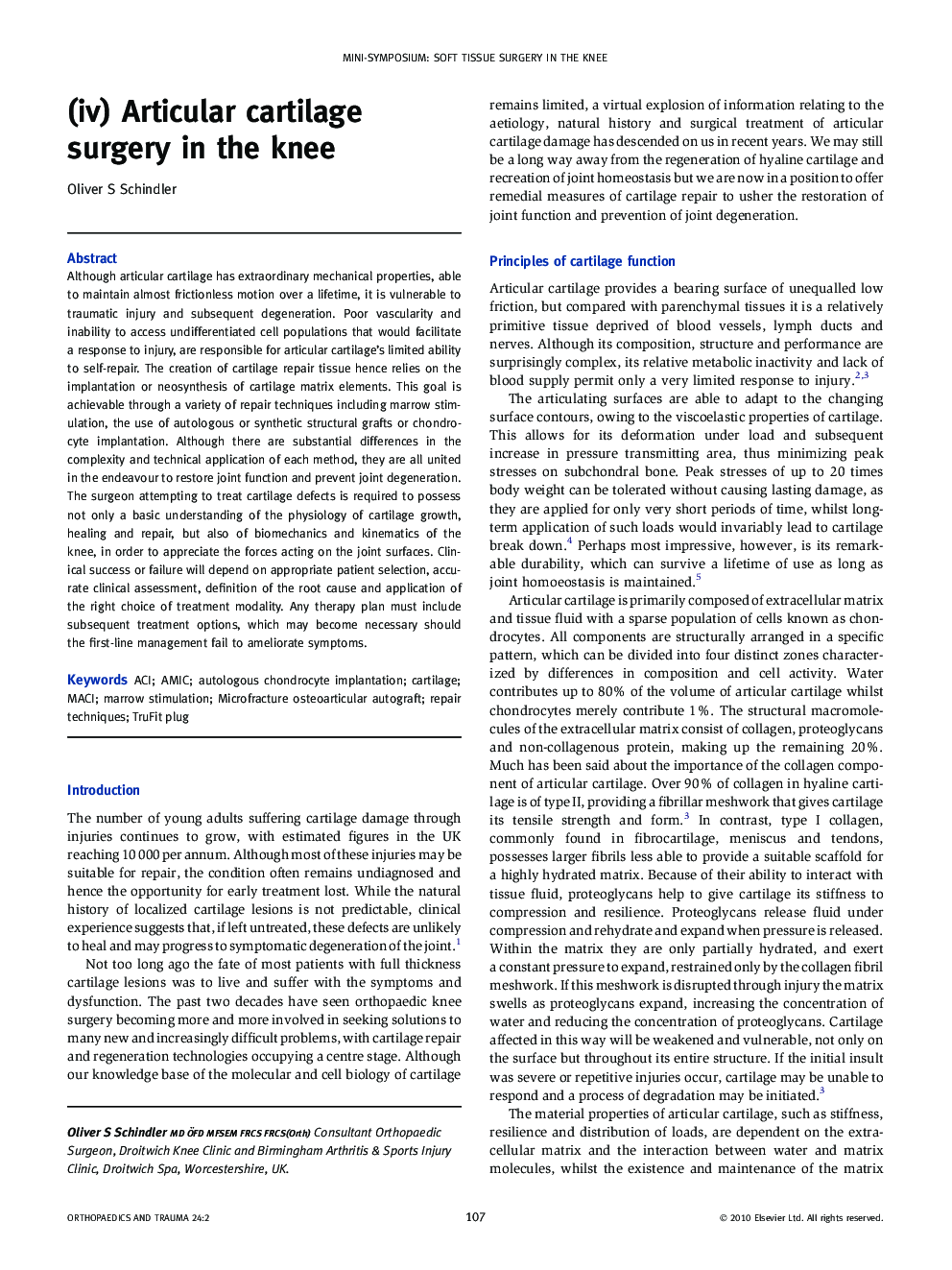| Article ID | Journal | Published Year | Pages | File Type |
|---|---|---|---|---|
| 4080555 | Orthopaedics and Trauma | 2010 | 14 Pages |
Although articular cartilage has extraordinary mechanical properties, able to maintain almost frictionless motion over a lifetime, it is vulnerable to traumatic injury and subsequent degeneration. Poor vascularity and inability to access undifferentiated cell populations that would facilitate a response to injury, are responsible for articular cartilage's limited ability to self-repair. The creation of cartilage repair tissue hence relies on the implantation or neosynthesis of cartilage matrix elements. This goal is achievable through a variety of repair techniques including marrow stimulation, the use of autologous or synthetic structural grafts or chondrocyte implantation. Although there are substantial differences in the complexity and technical application of each method, they are all united in the endeavour to restore joint function and prevent joint degeneration. The surgeon attempting to treat cartilage defects is required to possess not only a basic understanding of the physiology of cartilage growth, healing and repair, but also of biomechanics and kinematics of the knee, in order to appreciate the forces acting on the joint surfaces. Clinical success or failure will depend on appropriate patient selection, accurate clinical assessment, definition of the root cause and application of the right choice of treatment modality. Any therapy plan must include subsequent treatment options, which may become necessary should the first-line management fail to ameliorate symptoms.
